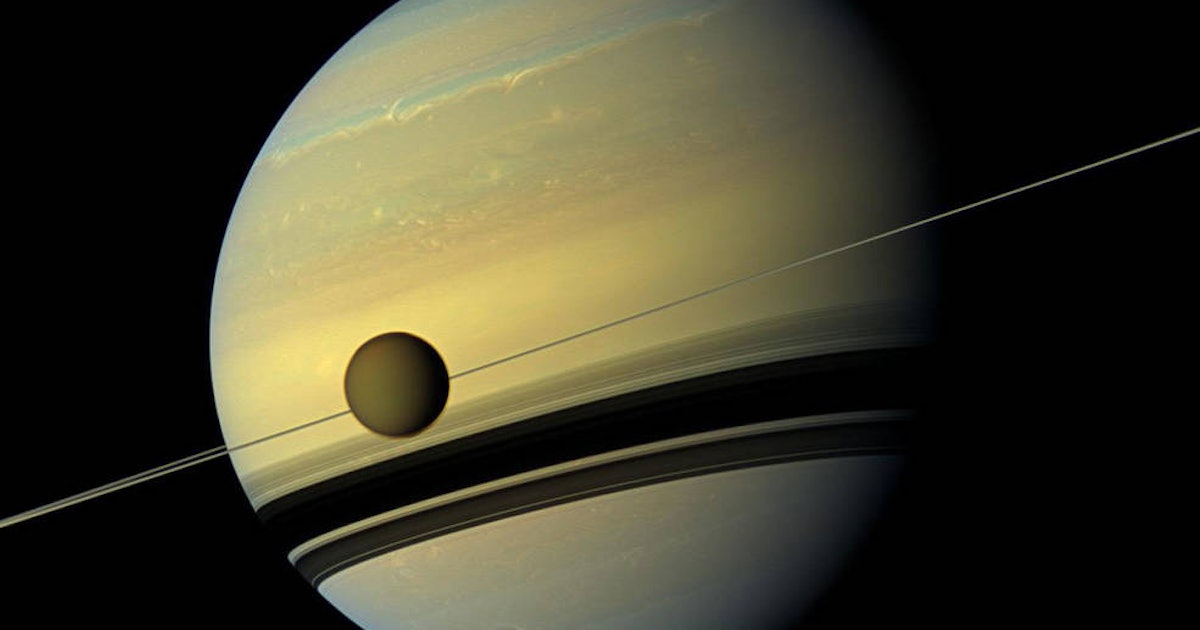
You need to see Saturn at its closest and brightest this week
It’s that time of year again: Saturn will be in opposition on August 14, offering the best viewing opportunities for a number of Saturn’s best features. This will be the best time in 2022 to see Saturn and its rings, with the planet exhibiting its largest apparent size and brightest magnitude.
Currently visible most of the night as the planet approaches opposition, Saturn’s opposition will culminate on August 14, when the planet is directly opposite the Sun on the ecliptic, as viewed from Earth.
This is a great time to view Saturn and observe the planet’s many excellent features. When observed over the course of several days, the planet will be in apparent retrograde motion (appearing to travel backwards in its orbit relative to Earth) between June 4 and October 3.
Saturn opposition 2022 date and time
At opposition on August 14, Saturn will be highest in the sky along the ecliptic around 1 a.m. local time, and can be located near Delta Capricorni in the faint constellation of Capricornus at that time. Saturn can also be spotted as it follows the “Teapot” asterism of Sagittarius along the ecliptic, when Saturn will be the brightest object in this part of the sky.
Saturn’s opposition will be an excellent opportunity to see the planet’s rings through a telescope, when the rings will appear tilted at 13.9 degrees relative to Earth.
Saturn’s largest moon, Titan, will also be visible with a telescope around this time, while the movements of some of the other moons may be observable with fancy scopes during the days around the opposition (Saturn has 53 named moons; at least 30 more unnamed moons exist, while classifications of hundreds of ambiguous satellites and particulate matter in Saturn’s rings offer opportunities for endless astronomical debate).
Fun fact: Saturn’s moon Titan is larger than the planet Mercury, and the only known moon in the Solar System with its own substantial atmosphere.
What is opposition?
Opposition occurs when a planet’s orbit around the Sun reaches the point when the planet is on exactly the opposite side of Earth from the Sun. This also means that the Sun’s light brightly illuminates the surface of the planet when viewed from Earth, just like the Sun’s light on a full moon. Since the outer planet is also at its closest distance from Earth, this alignment, or syzygy, offers some of the best viewing opportunities for seeing Saturn in the night sky.
How often is Saturn at opposition?
Saturn comes into opposition roughly once a year. Since Saturn takes significantly longer to orbit the Sun (29.4 Earth years) on its much longer trajectory, Earth spins around the Sun and catches Saturn at approximately the same place each year. Opposition occurs on average every 378 days, making opposition to Saturn move about 2 weeks later each year. In 2023, Saturn’s opposition will occur on August 27, and in 2024, the opposition will be on September 8.
How far is Saturn from Earth at opposition?
Saturn will be at its closest to Earth for 2022, at a mere 824 million miles, or about 73 light minutes. This calculates out to about 8.86 astronomical units, or fewer than 9 times the mean distance from the Earth to the Sun.
At this close distance, Saturn will appear at its largest apparent size for 2022, appearing at 18.76 arcseconds across. It will briefly reach magnitude 0.2 at its brightest when it reaches opposition.
By contrast, at its farthest point from Earth when Saturn reaches solar conjunction (next on February 16, 2023), Saturn will be at 10.81 astronomical units from Earth, with an apparent diameter of only 15.4 arcseconds.
Other planet opposition dates 2022
All the superior planets (the planets orbiting farther out from the Sun than the Earth) reach opposition at some point in their orbits, and this is generally the best time to observe and photograph these planets, at their closest and brightest:
- Neptune will be at opposition on September 16, 2022.
- Jupiter reaches opposition on September 26
- Uranus reaches opposition on November 9, when it will be visible with the naked eye
- Mars will be at opposition on December 7-8, when it will also be subject to a lunar occultation (the Moon will fully obscure the planet when observed from Earth) visible from parts of North America and northern and western Europe
The giant planets come into opposition approximately once a year. Mars, however, orbiting the Sun every 687 (Earth) days, only comes into opposition on average every 26 months, making December’s viewing an especially rare opportunity.
It’s that time of year again: Saturn will be in opposition on August 14, offering the best viewing opportunities for a number of Saturn’s best features. This will be the best time in 2022 to see Saturn and its rings, with the planet exhibiting its largest apparent size and brightest magnitude. Currently visible most of…
It’s that time of year again: Saturn will be in opposition on August 14, offering the best viewing opportunities for a number of Saturn’s best features. This will be the best time in 2022 to see Saturn and its rings, with the planet exhibiting its largest apparent size and brightest magnitude. Currently visible most of…